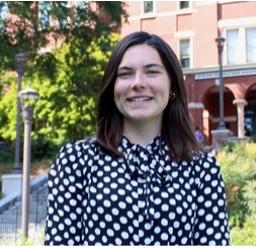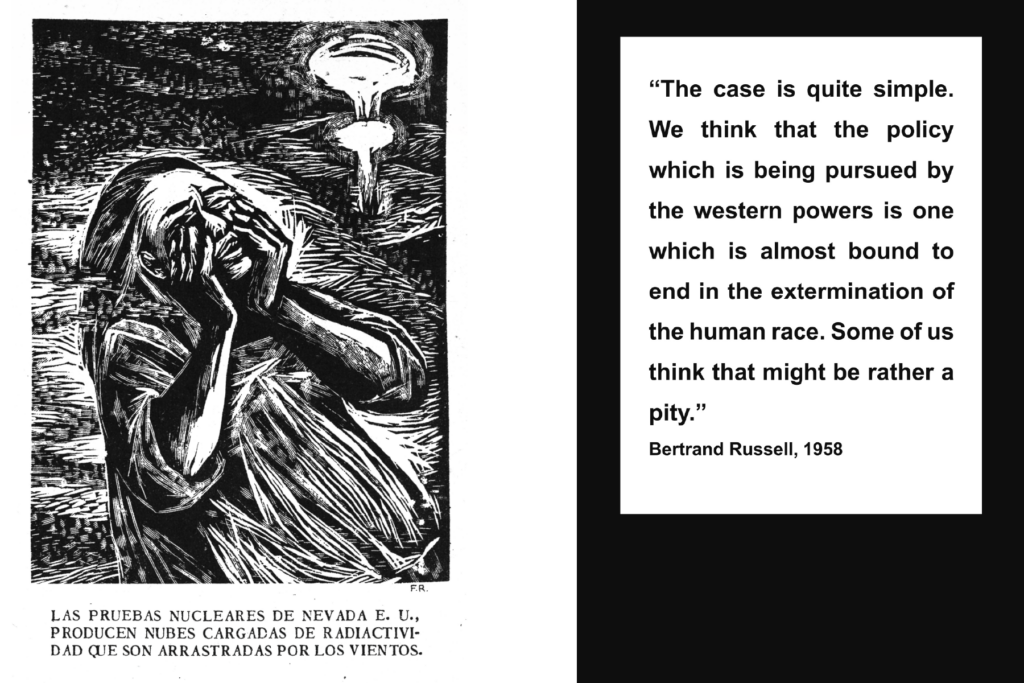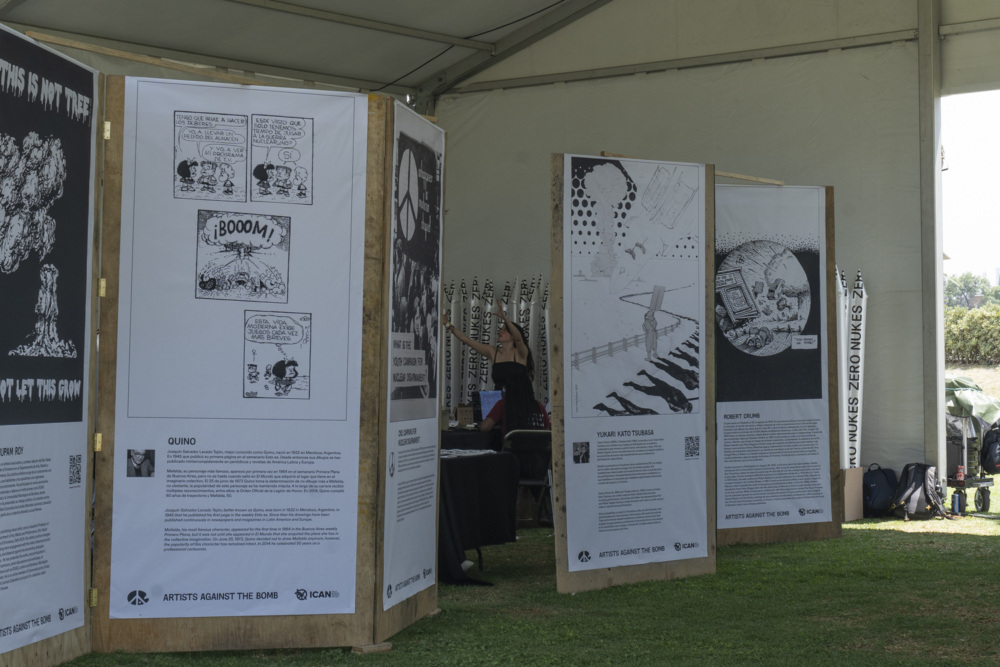
Kaitlyn Cullen
Intern, Communications
Atomic Pulse
Pedro Reyes is a Mexican artist who uses various mediums and techniques, from sculpture to social practice, to increase awareness of and participation in social and political issues. His international exhibitions and permanent collections have addressed issues ranging from gun violence to climate change. Recently he has turned his attention to nuclear weapons in a new collection, “Artists Against the Bomb,” a collaboration with hundreds of artists aimed at raising awareness about nuclear threats and calling for disarmament. NTI’s Kate Cullen and Rachel Staley Grant interviewed Reyes in advance of the “Artists Against the Bomb” exhibition in New York on the margins of the second meeting of States Parties to the Treaty on the Prohibition of Nuclear Weapons at the United Nations from November 27th to December 1st, a collaboration with hundreds of artists aimed at raising awareness about nuclear threats and calling for disarmament.
Thank you for speaking with us, especially as you are busy gearing up for the new exhibition. We want to talk to you about “Artists Against the Bomb,” but let’s start with your background. You’ve been creating sculptures and other forms of art as a way to open or influence discussions on social issues for decades. What drew you to this kind of work and what makes this type of art impactful?
I’ve been creating sculptures for several years, and there is a part of my practice that I call social sculpture. This is where part of the material that you work with represents interpersonal relationships. An example of a social sculpture is where I organized a campaign to collect or buy back weapons from citizens. The guns were melted down and then turned into shovels to plant trees. This idea of changing the shape of matter – this is what sculpture is. In sculpture you change the shape of a material, and that change has to be eloquent or compelling to bring an idea that captures the public’s imagination. It becomes a social platform for creativity. In these kinds of projects, the objects work as catalyzers and bring visibility to abstract social issues.
When you are taking on this kind of project you have to involve different sectors of a community that do not often collaborate with each other. However, a special project can occasionally come together. We brought in a sponsor, local law enforcement to handle the weapons, and then the civil community to call for the collecting of guns and planting of trees.
What kind of impact can art have on challenging social and political issues? Have you seen your work—or the work of fellow artists—lead to change?
The question of whether art can create change is hard to answer. Art is food for the soul, and we often gravitate towards works of art that feed our spirit.
It’s not that I believe that art has to have a function. But if you want art to produce something that has an impact beyond aesthetics, it is important to remember that the role of art is hard to measure. If you are trying to create change, it is important to design a mechanism to measure change. You cannot claim change if you cannot measure it. In the case of the guns, I wanted to have a one-to-one parity of “for every gun, now there is a tree.” That is something that can be accounted for.
Let’s transition to your work on nuclear weapons. Your 30-foot-tall “ZERO NUKES” mushroom cloud got a lot of attention in Times Square! How did you become interested in advocating for nuclear disarmament? What have you done to spread that interest to other artists?
I belong to Generation X, and I grew up in the 1980s terrified of nuclear war. Because of this, I have always felt very strongly about nuclear threats. I was very excited when I got the invitation to work with the Bulletin of the Atomic Scientists. I asked myself how I could transform the polarity of something negative into something positive.
I didn’t want to be the only artist working this. Many artists over the course of 70 years have called for the need to ban the bomb. I was very interested in having a multitude of voices. The idea behind “Artists Against the Bomb” is a chain reaction. We invited artists and in turn, each of them had to invite one or two more artists. The idea is a human bomb. It’s a challenge.
We are presenting nearly 200 posters in the first installment. In the next year it will be 500 or more. The idea is to have exponential growth.
It sounds really exciting. It’s also being shown in Manhattan, on the margins of a major meeting at the United Nations to advance the Treaty on the Prohibition of Nuclear Weapons, commonly known as the “nuclear weapons ban treaty.” What is your hope for the impact of “Artists Against the Bomb”?
A lot of great minds work on nuclear weapons issues, and not much has changed such as the idea of deterrence or the complexities of disarmament. A lot of people have deconstructed rational sanity of the arms race, and it is very useful to call attention to this through this type of art.
We are creating a platform where there is open dialogue for different expressions and each artist may approach things differently. What is interesting to see in this kind of platform is that we can show different sides to nuclear stories. There is an audience that follows nuclear issues, but we hope to amplify attention on this issue by bringing in new people. Each artist has their own following and the idea is to aggregate audiences. Another benefit of this project is that people can discover artists they were not aware of.

How can we see the exhibition?
There will be two exhibitions in New York City. One on November 27th inside the United Nations and an expanded version presented at the Judd Foundation in Soho. That version will run November 28th through December 5th.
We hope to run this exhibition again next year with more artists, but one great thing about this project is that you can download and print the artwork. You can do this on our website and host your own exhibition. We hope as the number of artists grow; the number of self-organized exhibitions grows around the world as well.
Your work is so impressive. Can you give us any hints about what’s next for you?
I am working on a documentary which is about the cultural history of the nuclear disarmament movement. Movies are often about those who make the bomb, but I think it is important to learn about the stories of those who try to unmake the bomb or ban the bomb. I am making a new documentary that tells other people’s stories. The more voices that we can present, the richer the discourse is. There have been epic moments in the 75 years of resistance and there is a huge resource of stories and artwork that has been made about this. There is a need to reintroduce these works because we are in a silent arms race where trillions of dollars are spent on renewing nuclear arsenals and we are closer than ever to seeing nuclear war in our lifetime.
Sign up for our newsletter to get the latest on nuclear and biological threats.
